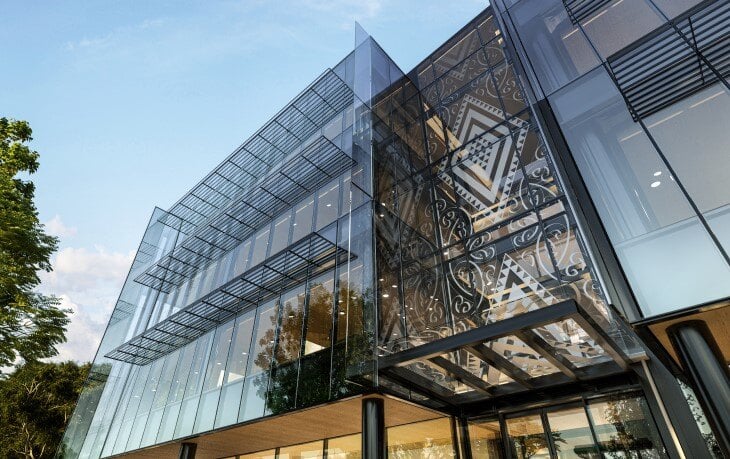Photo by @tokeller on Unsplash
One of my favourite parts of being part of the team here at the Green Building Council is meeting people who are working to create better, healthier, greener places for New Zealanders to thrive in.
Over the last few years, it’s clear that these numbers are on the up. Momentum is growing, as more and more Kiwis working in our sector see that green buildings and healthy homes are the standard that we should build to. Building only to the pretty woeful Building Code is increasingly being seen as unacceptable, especially given the role that we all must play in leading the path to a cleaner, less polluted, zero carbon Aotearoa.
As I zoom across the country, listening to your questions and feedback, the conversations now nearly always centre around carbon. ‘How can we build a low carbon building, or home?’ is a constant. And that’s great, because it is the key issue for our industry.
The new version of Homestar has carbon reductions at its heart. That’s important because the average new house in New Zealand emits five times too much carbon pollution, and the newest version of Homestar has been created to play a key role in tackling this.
All Homestar rated homes will now be able to demonstrate how they’re using sustainable materials that don't pump out huge amounts of carbon pollution when created. This type of carbon pollution, which has been belched into the atmosphere during the production of building materials, is often called ‘embodied carbon’. Homestar now includes an embodied carbon calculator, helping builders to work out the levels of carbon emitted in the manufacture of the building materials.
And the new Homestar aligns with the government’s Building for Climate Change programme. Our aim is that a 7 Star rating will be aligned with the first proposed cap, 8 Star aligned with the second cap and 9 Star aligned with Government’s final cap. This means project teams can now explore the implications of future building code changes.
Homes are one part of the picture though. What about all our other buildings? Our hospitals, schools, offices, shopping malls, and warehouses?
Green Star can be used on any type of commercial building. Any type at all. Using Green Star is a way to deliver dramatic but much needed carbon reductions – and these will be actual reductions in emissions, not offsetting.
If you want your building to play a part on the road to a zero carbon Aotearoa – whatever kind of building – then Green Star can help.
‘The greenest building is the one that already exists’ is a refrain often used by the burgeoning movement to retrofit buildings, and prioritise adaptive reuse over demolition and rebuild. Reusing buildings can have significant embodied carbon reductions, and reduce landfill waste too.
Two Green Star projects that have taken this approach are Waikoukou, at 22 Boulcott Street in Wellington, and the University of Auckland’s social sciences building.
The key feature of the 5 Green Star Waikoukou building is the retention of the already existing concrete and steel core, rather than demolishing the building and starting again. Project Green Star Accredited Professional Jason Quinn called this “not only a good economic strategy but also a good holistic minimisation of carbon emissions strategy.” 90 percent of building and demolition waste was diverted from landfill.
The University of Auckland hit the highest ever Green Star rating, awarded for its design. It’s a great example of how we can avoid bowling over our existing spaces and instead adaptively re-use them – massively slashing our carbon emissions, and showing that our industry can lead the way to a meeting our climate change goals. They evidenced their low embodied carbon approach and low embodied carbon material use through the LCA credits in Green Star.
Why is this important? It helps because it delivers the evidence needed for the Carbon Neutral Government Programme, the Taskforce on Climate Related Financial Disclosure, GRESB ratings for international investors or just to solidify that a building is better, lower carbon and easier to heat and keep healthy.
If you’d like to talk about carbon, Green Star and Homestar, the please do get in touch with me or any other member of the brilliant team here at the Green Building Council.
Ngā mihi
Andrew



